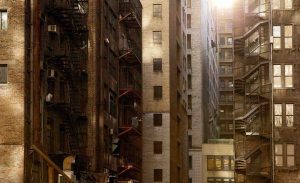 California law requires that landlords make residential rental properties habitable, that is, livable for tenants. In other words, the landlords must ensure that rented houses and apartments are safe. The sections of California law that deal with the subject of habitability are Civil Code 1941.1 and Health and Safety Code 17920.3. Since almost any kind of damage to the structures of the rented residential property or any infestation by pests could make the property unsafe if the damage is not repaired or if the pests are not removed, it is not possible for the legal code to list every possible safety hazard that constitutes grounds for a landlord/tenant lawsuit. In general, the most serious hazards are the ones that have to do with insect infestations and toxic mold. If your landlord has allowed the property you rent to become unsafe, contact an attorney dealing with habitability issues.
California law requires that landlords make residential rental properties habitable, that is, livable for tenants. In other words, the landlords must ensure that rented houses and apartments are safe. The sections of California law that deal with the subject of habitability are Civil Code 1941.1 and Health and Safety Code 17920.3. Since almost any kind of damage to the structures of the rented residential property or any infestation by pests could make the property unsafe if the damage is not repaired or if the pests are not removed, it is not possible for the legal code to list every possible safety hazard that constitutes grounds for a landlord/tenant lawsuit. In general, the most serious hazards are the ones that have to do with insect infestations and toxic mold. If your landlord has allowed the property you rent to become unsafe, contact an attorney dealing with habitability issues.
Is Your Rented Apartment or House Habitable?
Anyone who has lived with a roommate knows that “sufficiently clean” can be a subjective measure. California law is clear, though, that landlords must ensure that rented properties are safe before a tenant suffers a serious injury or illness because of the poorly maintained property. These are some problems that can be the basis for habitability disputes.
- Mold: Mold grows when excess water is present within walls or ceilings. It can also grow on surfaces like bathtubs or sinks when there is standing water, such as when faucets drip or bathtub and sink drains do not drain properly. Mold often forms inside walls when refrigerators or air conditioning units leak. Exposure to mold can cause serious illness, even if you do not touch the mold; it releases spores that can lead to respiratory illness or aggravate allergic symptoms if inhaled.
- Fire hazards: Smoke detectors must work properly. There should be no exposed electrical wires in the house or apartment.
- Lead paint: All paints currently sold for house painting are lead-free, but some older rental units still contain lead paint. It is difficult for tenants to know whether flaking or peeling paint from old paint jobs contains lead, so landlords should treat all peeling and flaking paint or loose paint chips as a potential lead poisoning hazard.
- Insect infestations: Infestations by cockroaches are just a nuisance, but infestations by other insects are truly hazardous. Termites can damage wooden structures enough to make the property uninhabitable, while bed bug infestations are notoriously difficult to eradicate.
If your landlord does not respond to your requests to remedy hazardous conditions in your apartment, you might have grounds for a lawsuit.
Contact Attorney Greg Brod About Habitability Lawsuits
If the state of maintenance of your rented residence is more than just an inconvenience, you should consult a lawyer who works with habitability issues. You might have grounds for a lawsuit even if the unsafe conditions have not yet resulted in major health problems. Contact Greg Brod in the San Francisco area to discuss your case.
(image courtesy of Todd Quackenbush)
 San Francisco Injury Lawyer Blog
San Francisco Injury Lawyer Blog

